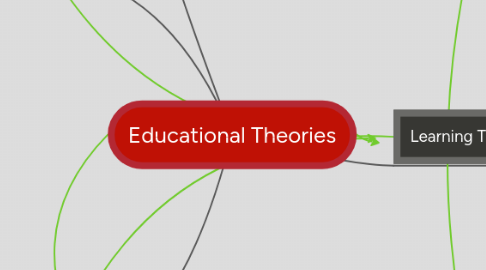
1. Technological Theories
1.1. Media Ecology
1.1.1. Postmodern
1.1.2. Technologies play leading role in human affairs, including learning
1.1.3. Preparadigmatic science
1.1.4. Media and communication affects human perception and learning
1.1.5. It's young
1.1.6. The study of media as an environment
1.2. Social Construction of Technology
1.2.1. Technological constructivism
1.2.2. Interpretative flexibility means there are alternative interpretation on one thing. And these generate different problems to be solved
1.2.3. There are many ways to create technology for school
1.2.4. Too narrow
1.2.5. Good or bad is determined by the society.
1.2.6. Human shapes technologies because we made it
2. TPACK
2.1. Knowledge needed by teacher
2.2. Inclusion of Technology
2.3. Technology, pedagogy and content are very important
2.4. Tell you how to use technology in education more effective
2.5. It is important to know what to teach, how to teach and how to use technology
3. Philosophy of teachnology
3.1. Philosophy of technology in teaching
3.2. Need to know when to use technology and when do not
3.3. Teachers' personal values affect their philosophy
3.4. PLN reflects philosophy of teachnology
4. Learning Theories
4.1. Connectivism
4.1.1. Learning is a process of connecting
4.1.1.1. For example, connecting addition and subtraction with spending money.
4.1.2. Learning can rest in a community, database and network
4.1.3. Maintaining the connection is needed for education
4.1.4. Diversity of opinion is very important for learning
4.1.5. Learn together and share
4.1.6. Learning is also a creation of something new
4.1.7. Learning can occur in many ways. Courses are not primary
4.2. Behaviourism
4.2.1. It is a theory based of explanations of learning that focus on external events as the cause of changes in observable behaviours (Woolfolk 2012)
4.2.2. Using positive reinforcement means giving desired objects to increase desired behaviours
4.2.3. Using negative reinforcement means taking away undesired objects to decrease bad behaviours, and therefore increase desired behaviours
4.2.4. Using punishment means to give bad stimulus to erase unwanted behaviours
4.2.4.1. If students are bad, give them detention
4.2.5. However behaviourism is too simplistic
4.2.6. This theory only based on external factors, rather than internal thought process
4.2.7. The internal factor is also very important
4.2.8. Key component in training animals and skills training
4.2.9. Learning can be presented in small manageable blocks
4.2.10. Stimulus generalization can produce secondary conditioning
4.3. Constructivism
4.3.1. It is a theory on how public knowledge in disciplines such as science, math, or history is constructed
4.3.2. Learners are active in constructing their knowledge
4.3.3. Social interactions are important
4.3.4. Knowledge is constructed by the realities and truths of the outside world, and internal organization, assimilation and accommodation
4.3.5. New knowledge built on the foundation of old knowledge. Old knowledge also influences the way new knowledge will be built
4.3.5.1. For instance, Kumon teaching method, learn from the past couple pages, perform a harder task, result in learning more.
4.3.6. The view of learning is the key
4.3.7. Students can modify knowledge depends on old and new knowledge
4.3.8. Students can direct and monitor their learnings
4.3.9. Collaboration helps to find solution
